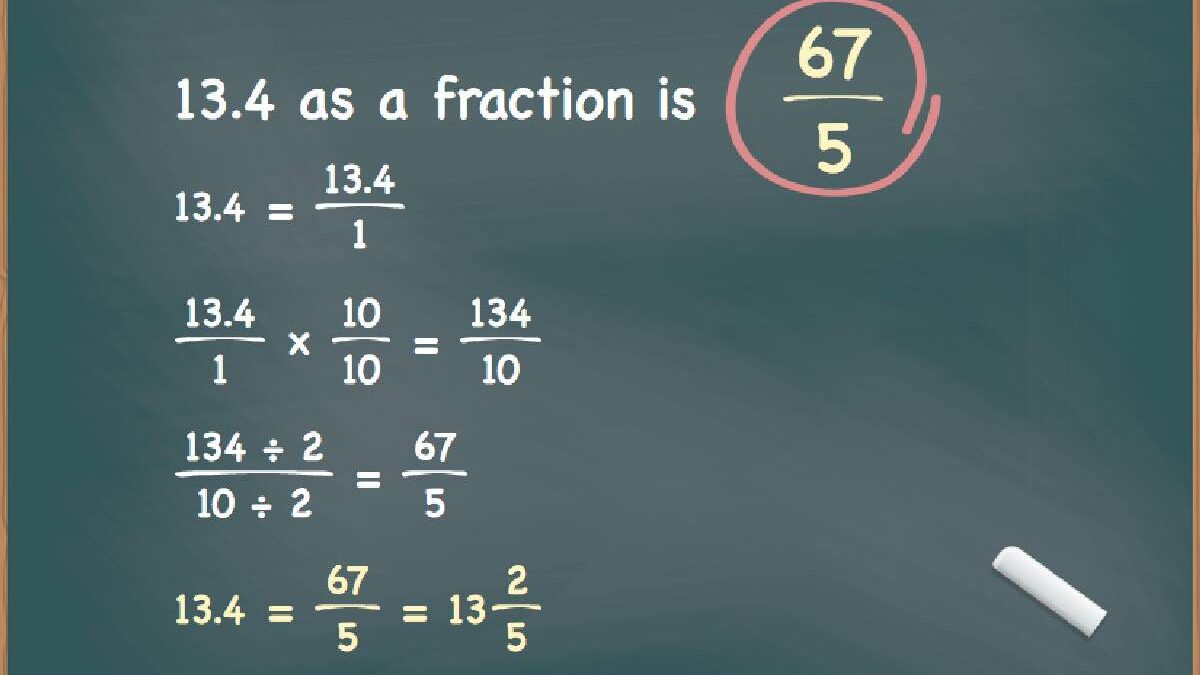Table of Contents
13 As A Fraction
13 As A Fraction: A common fraction is a numeral that represents a rational number. That same number can also be expressed as a decimal, a percent, or with a negative exponent.
For example, 0.01, 1%, and 10−2 are all equal to the fraction of 1/100.
A fraction is a part of a whole.
In arithmetic, the number is expressed as a quotient, in which the numerator is divided by the denominator.
In a simple fraction, both are integers. A complex fraction has a fraction in the numerator or denominator.
In a proper fraction, the numerator is less than the denominator.
However, the value placed above the horizontal line in a fraction is called a numerator. It signifies the number of parts taken out of the whole.
The numeric value below the vinculum of a fraction is called the denominator. It represents the total number of equal parts as a whole.
What is 13 as a fraction?
Here do you need to know how to write the decimal number 13 as a fraction?
Here we will show you step-by-step how to convert 13, so you can write it as a fraction.
You can take any number, such as 13, and write a 1 as the denominator to make it a fraction and keep the same value, like this:
13 / 1
To eliminate the decimal point in the numerator, we count the numbers after the decimal in 13, and multiply the numerator and denominator by 10 if it is 1 number, 100 if it is 2 numbers, 1000 if it is 3 numbers, and so on.
Therefore, in this case, we multiply the numerator and denominator by 1 to get the following fraction:
13 / 1
Then, we need to divide the numerator and denominator by the greatest common divisor (GCD) to simplify the fraction.
The GCD of 13 and 1 is 1. When we divide the numerator and denominator by 1, we get the following:
13 / 1
Therefore, 13 as a fraction is as follows:
13 / 1
keep .13
.13 as a fraction equals 13/100
Steps to convert .13 into a fraction.
Write .13 as
Here multiply the numerator and denominator by 10 for each digit after the decimal point.
- .131
- = .13 * 1001 * 100
- = 13100
As a side note, the whole number-integral part is: empty
The decimal part is: .13 = 13/100
Full simple breakdown: 13/100
How do you turn it?
Slightly percentage can be written as a fraction by dividing it by 100%. Because you can’t reduce 13100 more than it is, 13100 is your answer.
How do you write 13% as a fraction?
Solution
Using the lowest common denominator: 10013
Explanation:
As a fun fact, the term ‘percent’ has its roots in Latin, meaning ‘for each hundred’ (per meaning ‘for each and cent is 100).
If we translate this, our fraction is nearly complete:
- 13 for each 100, or 13 in every 100.
- As a fraction, that would be 100/13. Additionally, because 13 is a prime number,
we cannot reduce the fraction anymore, so the final is 10013.

